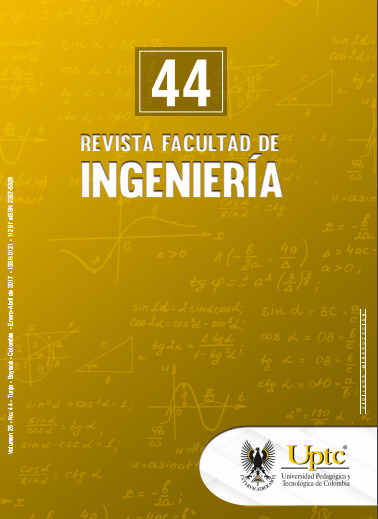Traffic model for the interconnection of networks and operators using MPLS-TE

Abstract
In this paper, the main features of MPLS Traffic Engineering are presented to illustrate how telecommunication service providers use them to create interconnections between each other in order to offer telecom services satisfying QoS commitments. Based on previous traffic models, a new model, which deals with traffic queue balancing for different Classes of Service, and for a provider using another provider´s network is presented. The model output shows that carrying another operator’s traffic may increase delays in an undesirable manner, forcing the carrier to increase the serving rate of LSRs until Utilization is below 60 %. In order to validate the model, a number of network scenarios are implemented in the Wolfram Mathematica 10.1 Study Version, based on study case configurations of an MPLS network. The total global model is useful for future implementation of test-beds of interconnected providers under an MPLS environment.
Keywords
Autonomous Systems (AS), diffserv aware, Multi-Protocol Labeled Switching (MPLS), queuing balancing, Traffic Engineering (TE), TE-LSP
References
- ITU-T, “Recommendation I.741: Interworking and interconnection between ATM and switched telephone networks for the transmission of speech,” Voiceband Data and Audio Signals, 1999.
- L. Fang and J. L. Le Roux, “Interprovider IP-MPLS Services: Requirements, Implementations and Challenges in Enabling Interprovider service Quality,” IEEE Commun. Mag., vol. 43 (6), pp. 119-128, Jun. 2005. DOI: http://doi.org/10.1109/MCOM.2005.1452840. DOI: https://doi.org/10.1109/MCOM.2005.1452840
- E. Rosen, A. Viswanathan and R. Callon, “Multiprotocol Label Switching Architecture,” RFC 3031, 2001. DOI: https://doi.org/10.17487/rfc3031
- D. Awduche, J. Malcolm, J. Agogbua, M. O’Dell, and J. McManus, “Requirements for traffic engineering over MPLS,” RFC 2702, Sep. 1999. DOI: https://doi.org/10.17487/rfc2702
- C. Cerav Erbas and R. Mathar, “An Offline Traffic Engineering Model for MPLS Networks,” in 27th Annual IEEE Conference on Local Computer Networks LCN, 2002, pp. 166-174.
- K. Hao and Z. Jin, “An on-line routing algorithm based on the off-line optimal computing in MPLS,” in 5th International Conf. on Wireless Communications, Networking and Mobile Computing WiCom, Beijing, China, Sep. 2009, pp. 1-5. DOI: http://doi.org/10.1109/wicom.2009.5301929. DOI: https://doi.org/10.1109/WICOM.2009.5301929
- T. Robertazzi, Computer Networks and Systems: Queueing Theory and Performance Evaluation, 3rd Ed. New York, USA: Springer-Verlag, 2000. DOI: http://doi.org/10.1007/978-1-4612-1164-8. DOI: https://doi.org/10.1007/978-1-4612-1164-8
- T. Bonald, A. Proutiere, and J. W. Roberts, “Statistical Performance Guarantees for Streaming Flows Using Expedited Forwarding,” in 20th Annual Joint Conf. of the IEEE Computer and Communications Societies, IEEE INFOCOM, 2001, vol. 2, pp. 1104-1112. DOI: http://doi.org/10.1109/infcom.2001.916304. DOI: https://doi.org/10.1109/INFCOM.2001.916304
- A. Banchs, S. Tartarelli, F. Orlandi, S. Sato, K. Kobayashi, and H. Pan, “Configuration of Diffserv routers for high-speed Links,” Workshop on High Performance Switching and Routing, May. 2002, pp. 172-177. DOI: http://doi.org/10.1109/HPSR.2002.1024230. DOI: https://doi.org/10.1109/HPSR.2002.1024230
- J. C. R. Bennett, K. Benson, A. Charny, W. F. Courtney, and J.-Y. Le Boudec, “Delay Jitter Bounds and Packet Scale Rate Guarantee for Expedited Forwarding,” IEEE/ACM Trans. Netw., vol. 10 (4), pp. 529-540, Aug. 2002. DOI: http://doi.org/10.1109/TNET.2002.801404. DOI: https://doi.org/10.1109/TNET.2002.801404
- T. Telkamp, A. Maghbouleh, V. Sharma, and S. Gordon, “Internet Traffic Is Not Self-Similar at Timescales Relevant to QoS,” Preprint, Feb.
- MPLS Traffic Engineering – DiffServ Aware DS-TE, Cisco Systems Inc., San Jose CA USA, 2007.
- D. Awduche, L. Berger, D. Gan, T. Li, V. Srinivasan, and G. Swallow, “RSVP-TE: Extensions to RSVP for LSP Tunnels”. RFC 3209, Dec. 2001. DOI: https://doi.org/10.17487/rfc3209
- J. Guichard, F. Le Faucheur, and J. P. Vasseur, Definitive MPLS Network Designs, Indianapolis, IN, USA: Cisco Press, 2005.
- E. Oki, I. Inoue, and K. Shiomoto, “Path Computation Element (PCE)-Based Traffic Engineering in MPLS and GMPLS Networks,” in Sarnoff Symposium, IEEE, NTT Corporation, Tokyo, Japan, 2007, pp. 1-5. DOI: http://doi.org/10.1109/sarnof.2007.4567400. DOI: https://doi.org/10.1109/SARNOF.2007.4567400
- O. V. Lemeshko, A. S. Ali, and O. V. Starkova, “A Flow-Based Model of Dynamic Queue Balancing in the MPLS-network with Traffic Engineering Queues Support,” in 11th Int. Conf. the Experience of Designing and Application of CAD Systems in Microelectronics (CADSM), Svalyava, Polyana, Feb. 2011, pp. 116-117.
- G. Capdehourat, F. Larroca, and P. Belszarena, “Minimum queue length load-balancing in planned Wireless Mesh Networks,” in Int. Symposium on Wireless Communication Systems ISWCS, Paris, France, Aug. 2012, article number 6328474, pp. 781-785. DOI: http://doi.org/10.1109/iswcs.2012.6328474. DOI: https://doi.org/10.1109/ISWCS.2012.6328474
- J. Yu, Y. He, K. Wu, M. Tacca, A. Fumagalli, and J.-P. Vasseur, “A Queueing Model Framework of PCE-based Inter-area Path Computation,” in IEEE INFOCOM 2009, Rio de Janeiro, Brasil, Apr. 2009, pp. 2666-2670. DOI: http://doi.org/10.1109/INFCOM.2009.5062208. DOI: https://doi.org/10.1109/INFCOM.2009.5062208
- N. B. Djarallah, H. Pouyllau, S. Lahoud, B. Cousin, “Multi-constrained path computation for inter-domain QoS-capable services,” Int. J. Comm. Netw. Distrib. Syst., vol. 12 (4), pp. 420-441, 2014. DOI: http://doi.org/10.1504/IJCNDS.2014.062229. DOI: https://doi.org/10.1504/IJCNDS.2014.062229
- M. Chaitou and H. Charara, “Signaling aspects of optimized inter-domains point to multipoint paths in Multi-Protocol Label Switched networks,” in 2nd Int. Conf. on Advances in Computing, Communications and Informatics ICACCI, Mysore, India, Aug. 2013, article number 6637465, pp. 1861-1866. DOI: https://doi.org/10.1109/ICACCI.2013.6637465
- F. Paolucci, I. Cerutti, F. Cugini, L. Valcarebghi, and P. Castoldi, “Optimal K-survivable backward-recursive path computation BRPC in multi-domain PCE-based networks,” Photonic Network Communications, vol. 26 (1), pp. 1-12, Aug. 2013. DOI: http://doi.org/10.1007/s11107-013-0403-5. DOI: https://doi.org/10.1007/s11107-013-0403-5
- S. Floyd and V. Jacobson, “Random Early Detection Gateways for Congestion Avoidance,” IEEE/ACM Trans. Netw., vol. 1 (4), pp. 397-413, Aug. 1993. DOI: http://doi.org/10.1109/90.251892. DOI: https://doi.org/10.1109/90.251892
- T. Shan and O. W. W. Yang, “Bandwidth Management for Supporting Differentiated- Services-Aware Traffic Engineering,” IEEE Trans. Parallel Distrib. Syst., vol. 18 (9), pp. 1320-1331, Sep. 2007. DOI: http://doi.org/10.1109/TPDS.2007.1052. DOI: https://doi.org/10.1109/TPDS.2007.1052
- L. Atzori and T. Onali, “Operators Challenges toward Bandwidth Management in Diffserv-Aware Traffic Engineering,” Topics in Network and Service Management, IEEE Commun. Mag., vol. 4, pp. 154-160, May. 2008. DOI: http://doi.org/10.1109/MCOM.2008.4511664. DOI: https://doi.org/10.1109/MCOM.2008.4511664
- Q. Xu and J. Sun, “A simple active queue management based on the prediction of the packet arrival rate,” J. Netw. Comput. Applicat., vol. 42, pp. 10-22, Jun. 2014. DOI: http://doi.org/10.1016/j.jnca.2014.03.006. DOI: https://doi.org/10.1016/j.jnca.2014.03.006